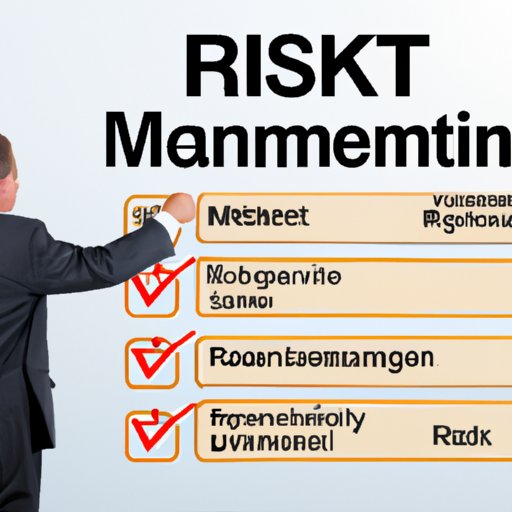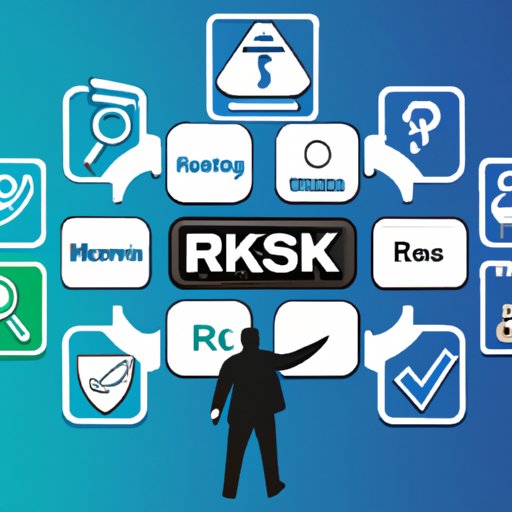Introduction
Risk management in information technology (IT) is a critical component of any organization’s security strategy. It involves assessing potential risks to an organization’s IT infrastructure and developing strategies to mitigate those risks. Risk management can involve several different approaches, such as identifying and assessing risks, developing a risk management framework, and implementing risk mitigation strategies.
In this article, we’ll explore the basics of risk management in IT, including different types of risk and their impact on IT systems, how to implement an effective risk management strategy, and the benefits of developing a risk management framework. We’ll also provide a comprehensive guide to risk management for IT professionals.
Exploring the Basics of Risk Management in IT
Before we dive into the details of risk management in IT, let’s take a look at what it is and why it’s important. Risk management is the process of identifying, assessing, and mitigating risks to an organization’s IT infrastructure. These risks can come from a variety of sources, such as external threats, internal vulnerabilities, or natural disasters.
When it comes to IT, there are two main types of risks that organizations need to be aware of: technical risks and operational risks. Technical risks refer to issues related to hardware, software, and other technology components, while operational risks involve processes, procedures, and personnel. Organizations must identify and assess these risks in order to develop an effective risk management strategy.

How to Implement an Effective Risk Management Strategy
Once an organization has identified and assessed its risks, the next step is to develop a risk management framework. This framework should include policies and procedures that will help the organization manage its risks. It should also include risk mitigation strategies, such as using secure passwords, regular system updates, and employee training.
Organizations should also establish risk management policies, such as requiring users to use strong passwords and restricting access to sensitive data. Finally, organizations should implement risk mitigation strategies to reduce the likelihood of a security breach or other incident. These strategies may include using firewalls, encrypting data, and regularly patching systems.

A Comprehensive Guide to Risk Management for IT Professionals
For IT professionals, understanding the different types of risk management is essential. It’s important to understand the different types of risks that can affect an organization’s IT infrastructure, as well as the various strategies available to mitigate them. Additionally, IT professionals should be familiar with the impact of risk management on IT security, as well as tips for improving their risk management processes.
To help IT professionals become more familiar with risk management, here are some key points to keep in mind:
- Understand the different types of risk management, including technical risks, operational risks, and risk mitigation strategies.
- Examine the impact of risk management on IT security, including how to protect against external threats and internal vulnerabilities.
- Develop an effective risk management framework, including policies and procedures for managing risks.
- Implement risk mitigation strategies to reduce the likelihood of a security breach or other incident.
- Review and update your risk management process regularly to ensure that it remains effective.

The Benefits of Developing a Risk Management Framework
By developing and implementing an effective risk management framework, organizations can reap many benefits. First and foremost, it can help reduce costs by reducing the likelihood of a security breach or other incident. It can also help improve security, as organizations will be better prepared to respond to threats and vulnerabilities. Finally, it can help enhance compliance with regulations, such as GDPR and HIPAA.
Conclusion
Risk management in IT is a critical component of any organization’s security strategy. It involves assessing potential risks to an organization’s IT infrastructure and developing strategies to mitigate those risks. By understanding the different types of risk and their impact on IT systems, as well as how to develop a risk management framework and establish risk management policies, organizations can reduce costs, improve security, and enhance compliance.
We hope this article has provided a comprehensive guide to risk management in IT. With the right approach, organizations can create an effective risk management strategy that will help protect their systems and data.
(Note: Is this article not meeting your expectations? Do you have knowledge or insights to share? Unlock new opportunities and expand your reach by joining our authors team. Click Registration to join us and share your expertise with our readers.)
